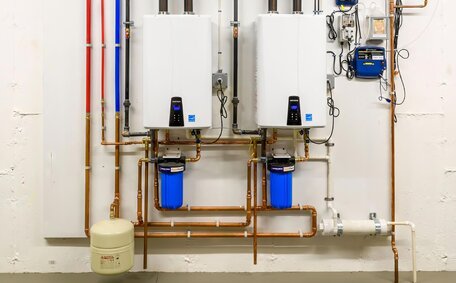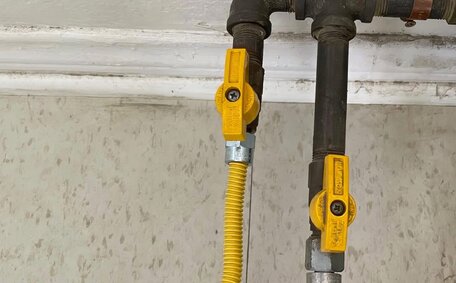
How Hard Water Hurts Hot Water Heaters
Hard water leaves mineral deposits in heaters, pipes and tanks. This limescale reduces efficiency, lifespan and hot water availability. Contact us for affordable water softening solutions.
Read MoreTo locate a leak in your hot water system, visually inspect the tank, pipes, and valves for signs of moisture or drips. Pay close attention to connection points between pipes, joints, valves and the water heater itself, as these are common sources of leaking hot water.
If hot water system leaking is not immediately visible, there are a few ways to isolate the issue:
Once the source is identified, minor leaks from fittings or valves can often be fixed by DIY repairs like tightening connections or replacing gaskets on the hot water tank. However, if the leak is from the tank itself, the entire hot water system may need replacement. For safety reasons, it’s recommended to get a professional plumber for diagnosis and any major repairs.
Inspect the exterior of your water heater for moisture, rust, or corrosion to identify leaks. This could indicate a water tank leaking situation. Focus on the top and bottom sections of the tank and connections.
Check the anode rod on metal tanks - this helps prevent corrosion but if deteriorated could be the cause of your hot water heater leaking. You may notice rust coloured discharge around the rod if it needs replacing.
Inspect the tank for dents, cracks or bulges which can mean the pressure is too high, leading to build up. The pressure relief valve is designed to release this pressure, so leaks here may indicate it needs to be replaced.
If your tank is more than 10 years old, shows signs of tank leaking, has substantial corrosion or you find cracks, it may be time to replace the entire unit.
For minor leaks due to loose fittings, tighten connections or replace gaskets, as you might fix the tank without professional assistance. But for safety reasons, it’s best to call a licenced plumber to inspect tanks with substantial corrosion or cracking.
When inspecting pipes and fittings, start by tracing the flow of water through your hot water system along the water inlet to the outlet feeding your home. Check for leaks, corrosion or damage at any joints, valves, elbows or connections.
Pay close attention to the inlet and outlet pipes connected to the tank itself. Loose fittings here are one of the most common sources of leakage. You may just need to tighten connections or replace worn gaskets or washers.
Also examine any flexible pipes, as the tubing material can degrade over time and develop cracks. Signs of leaks here would necessitate replacing the piping.
For metal pipes, Watch for rust or corrosion, which may cause pinhole leaks when combined with high water pressure. Plastic pipes can also become brittle and crack with age.
Examine the TPR valve connection for any signs of leakage. A leak coming from here often occurs if the valve has activated due to excess pressure water in the tank.
For any water leak in your gas hot water system at threaded pipe connections, apply new water tape, like Teflon, to create a watertight seal. This step can help prevent minor leaks from worn or loose fittings.
Significant leaks from pipes or fittings usually point to a more serious issue, calling for professional repair or potentially system replacement.
Safety is paramount when making repairs to your hot water system. Start by turning off the power supply to an electric system or gas supply to a gas heater before attempting any work. Also shut off the water supply at the mains or tank inlet valve.
For minor leaks at fittings or valves, basic DIY repairs can often resolve the issue:
Gradually open taps during drainage and refill to prevent pressure surges and new leaks. Ensure your tank is kept at the recommended water pressure to avoid future leaks.
Complex tasks such as replacing valves, relief valves, or anode rods should be handled exclusively by qualified plumbers. Attempting tank repairs is particularly hazardous due to the explosion risk from combustible gases. Call a professional for any major hot water system issues.
Accurately refil:
Take your time with the refilling and testing process to guarantee repairs are watertight. If any leaks persist, further servicing by a professional may be required. Maintaining proper water pressure is also key to prevent water damage from leaks recurring.
Accurately refilling and testing your hot water system after repairs is essential. Follow these steps:
Our licenced, experienced plumbers at your local [Business Name] are always available to assist with any repairs or servicing for your hot water system. We service all areas across [Geographical Location]. For prompt and reliable assistance, [Desired CTA] today:
[Business Name] [Business Phone] [Business Email]
Hard water leaves mineral deposits in heaters, pipes and tanks. This limescale reduces efficiency, lifespan and hot water availability. Contact us for affordable water softening solutions.
Read MoreIt’s important to routinely check your gas appliances for any issues. Signs of problems include gas leaks, strange sounds, odd smells and more. Have a professional inspect your gas appliances annually and service them regularly for safety.
Read MoreUpgrading your gas meter is a simple process completed by registered technicians. It involves disconnecting your gas supply for 15 minutes to swap the old meter for a new digital smart meter. The upgrade is free and improves accuracy.
Read MorePicnic Point, 2213 NSW
We will call back as soon as possible.




